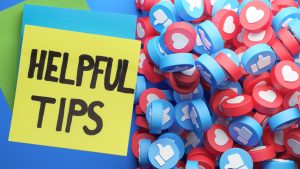Organic Versus Paid Social Media
You know you need to grow your social media reach and influence, but do you find yourself at a loss of what to do next with all the conflicting advice? ?♂️ Paid ads seem like they might be a shortcut to growing, but could it really be that easy? If you’re searching online, you’ll see some lofty promises of shortcuts and hacks to growth, but rest assured, there are no shortcuts to meaningful growth. This blog will help bring some more clarity to your options when you’re considering both organic and paid social media. Learn the differences between the two types of growth and the benefits of each approach.
The Difference Between Organic & Paid
Organic social media is the content you post on your platforms for free, which is meant for your followers. Paid social media refers to the method of paying to promote your content beyond just your followers to people who may not otherwise come across it. (Think: paid ads, sponsored social media posts, and other promoted multimedia.)
The Benefits and Pitfalls of Organic Social Media
Of course, there are benefits and pitfalls to both organic and paid social media, and ideally, a balanced strategy will include both. Keep this in mind, though- paid media is not going to do you much good if your organic social media strategy is weak. As a non-profit organization or a ministry, you might not have the extra budget for paid ads, and that’s ok. You can accomplish so much with a focused and consistent digital strategy for organic. Plus, people have been looking for ways to limit how many ads show up in their newsfeed over the past couple of years. So for those of you who feel you’re at a disadvantage because you have a low or no digital ad budget, you’re not.
Growing an online community through social media is not a sprint, it’s a marathon.
Jenny Li Fowler
Organic media is crucial to connecting with your fans, but like most good things, it takes time. Don’t let that discourage you. Genuine relationships and deep connections take work and don’t happen overnight…sometimes we forget that on social media. To make the most of your time and effort, you’ve got to have a social media strategy in place. Super serve your audience and think about ways to add value to their lives. Your followers need you to be uniquely you- your message is important, and your purpose matters.
A few ways to make the most of your organic posts:
- Start conversations by asking questions
- Keep track of your followers…if they’ve asked you for prayer, check in with them in a few weeks
- Pay attention to what kind of content your followers engage with
- Don’t post things just for the likes. Make sure the content you create adds value in some way to your followers, and the numbers will follow.
- Experiment. When the algorithm inevitably changes again, you will probably notice changes in your stats that could scare you. Remember that your mission is bigger than numbers. Focus on the things you can control—your message, consistency, and engagement with your followers.
The Benefits and Pitfalls of Paid Social Media
Paid media allows you to target engaged fans on your page, by interests, video views, location, and more. You can also create a digital ad campaign that places your brand in front of people who’ve never heard of you (a cold audience) to create a warm audience to retarget. Paid media methods get your content out faster and to more people than organic methods, but you run the risk of building an unsuitable following if you’re not careful. Plus, people tend to dislike ads on their feeds (as mentioned earlier), though, with a paid social strategy, you can run some pretty awesome campaigns that don’t feel like an ad and can have great results. ?
If you decide to invest in paid advertising, be sure to track your ad performance throughout the campaign. You may find it necessary to tweak the ads, the targeting, the budget, etc. It’s not wise to “set it and forget it.” FYI: If you’re running paid ads on Facebook, let it go through the “Learning Phase” before making adjustments.
Suppose your focus is growing your audience on social media. In that case, we recommend getting your organic social media strategy in place first before you try to amplify your social media pages or profiles. There are situations where paid ads are really effective, even if your organic social media isn’t where you’d like it yet. For example, if you sell tickets to a concert and direct clicks to an events page, paid ads is an excellent approach to marketing those type of posts vs. posting links on your organic newsfeed, which can reduce your reach.
KillerB Tip For Radio
Think beyond creating ads that push app downloads or streaming. Create content that helps people with the problems they face in their everyday lives. For example, create a blog or a podcast episode that speaks directly to things you know people are dealing with right now: fear, anxiety, loneliness, holidays, current events, etc. Place CTAs for your macro-goals (e.g., download app, email signup, etc) on that blog. Placing your followers’ needs above your own positions you as a source of hope for that individual, leading them to engage with you more and tell their friends about your station.
So while both organic social media and paid social media have benefits, both require some planning and strategy. Before investing in paid advertisement, make sure your organic strategy and messaging are dialed in. If you need help creating a strategy that aligns with your purpose and mission on social media or just looking for guidance before paying for digital ads, schedule a 30-minute session with Killer Bee Marketing, and let’s see how our team can serve you.
This site is protected by reCAPTCHA and the Google Privacy Policy and Terms of Service apply.
You may also like
It's More Than Marketing
It's A Mission
serving those who serve others








